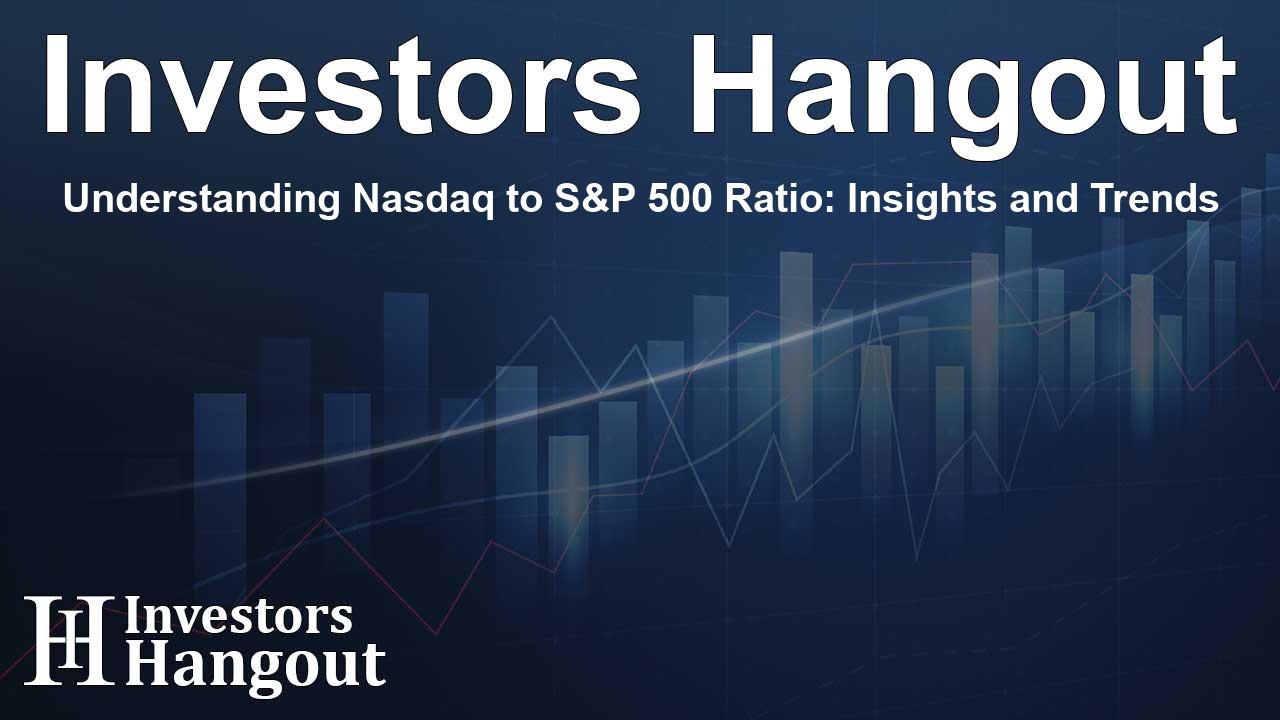Understanding Nasdaq to S&P 500 Ratio: Insights and Trends

Analyzing the Nasdaq to S&P 500 Ratio
In early 2021, a shift began in the stock indices that would catch the attention of investors and analysts alike. The Nasdaq Composite index started to underperform relative to the S&P 500 index, and this trend has persisted for over three years now.
Long-term Trends and Patterns
A long-term view of the Nasdaq to S&P 500 ratio reveals an upward trajectory; however, the recent period of underperformance raises some eyebrows. Observing the price ratio's peaks, one can notice a striking similarity between its behavior in 2021 and its high back in March 2000. This situation suggests a potential double top pattern, a technical indicator that could signal caution among market participants.
Resistance Levels at Play
As we look ahead, the Nasdaq faces several levels of price resistance that the index must surpass to reclaim leadership in the market. For the Nasdaq to confirm that it's returning to strength, these hurdles must be cleared. Analysts and enthusiasts closely watch these developments to gauge where the tech-heavy index is headed next.
Concerns Over Performance Metrics
It is pertinent to consider what it would mean if the current resistance levels hold firm, causing the Nasdaq to slip further. If the ratio starts heading lower again, investors should reconsider their positions as technology stocks have historically driven market growth for the last two decades. A slowdown in this sector could have ripple effects across the broader market.
The Role of Technology Stocks
Technology companies have been the backbone of market leadership, highlighting the importance of monitoring the Nasdaq's performance closely. Investors and analysts are urged to pay attention, as any significant downturn in this index could indicate broader market concerns.
The Future for Investors
For tech bulls, the current juncture is critical. This period may present both challenges and opportunities as they navigate the resistance levels. Continued monitoring of this ratio will be essential for informed investing, as market dynamics can shift rapidly. Emerging trends may provide insights on whether the Nasdaq will regain its competitive edge or continue to lag behind the S&P 500.
Conclusion and Next Steps
The Nasdaq to S&P 500 ratio serves as a critical earnings barometer. Investors are encouraged to stay tuned as developments unfold, understanding the historical context and current implications. Being informed can make all the difference in exceptional market strategies.
Frequently Asked Questions
What is the Nasdaq to S&P 500 ratio?
The Nasdaq to S&P 500 ratio compares the performance of the Nasdaq Composite index to the S&P 500 index, indicating which index is outperforming.
Why is the Nasdaq's recent underperformance significant?
It raises concerns about the health of technology stocks, which have typically been market leaders over the past decades.
What does a double top pattern signify?
A double top pattern indicates a possible reversal in momentum, suggesting that the asset may fail to surpass a previous peak.
What should investors watch for moving forward?
They should monitor price resistance levels and trends within tech stocks as they are crucial for understanding potential market shifts.
How can the Nasdaq reclaim leadership in the market?
The Nasdaq needs to clear current resistance levels and demonstrate consistent upward momentum against the S&P 500.
About Investors Hangout
Investors Hangout is a leading online stock forum for financial discussion and learning, offering a wide range of free tools and resources. It draws in traders of all levels, who exchange market knowledge, investigate trading tactics, and keep an eye on industry developments in real time. Featuring financial articles, stock message boards, quotes, charts, company profiles, and live news updates. Through cooperative learning and a wealth of informational resources, it helps users from novices creating their first portfolios to experts honing their techniques. Join Investors Hangout today: https://investorshangout.com/
Disclaimer: The content of this article is solely for general informational purposes only; it does not represent legal, financial, or investment advice. Investors Hangout does not offer financial advice; the author is not a licensed financial advisor. Consult a qualified advisor before making any financial or investment decisions based on this article. The author's interpretation of publicly available data shapes the opinions presented here; as a result, they should not be taken as advice to purchase, sell, or hold any securities mentioned or any other investments. The author does not guarantee the accuracy, completeness, or timeliness of any material, providing it "as is." Information and market conditions may change; past performance is not indicative of future outcomes. If any of the material offered here is inaccurate, please contact us for corrections.